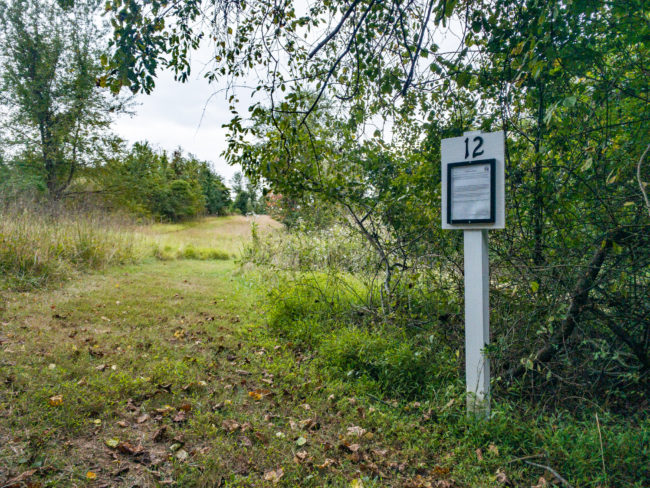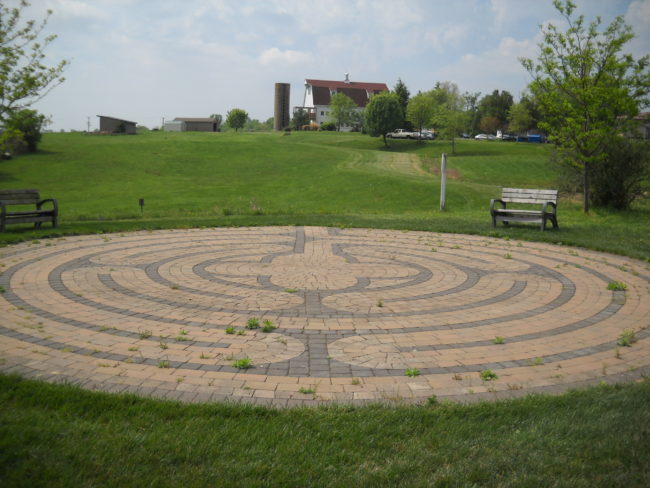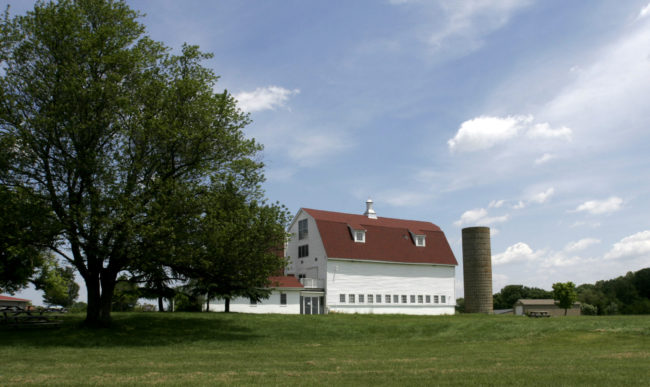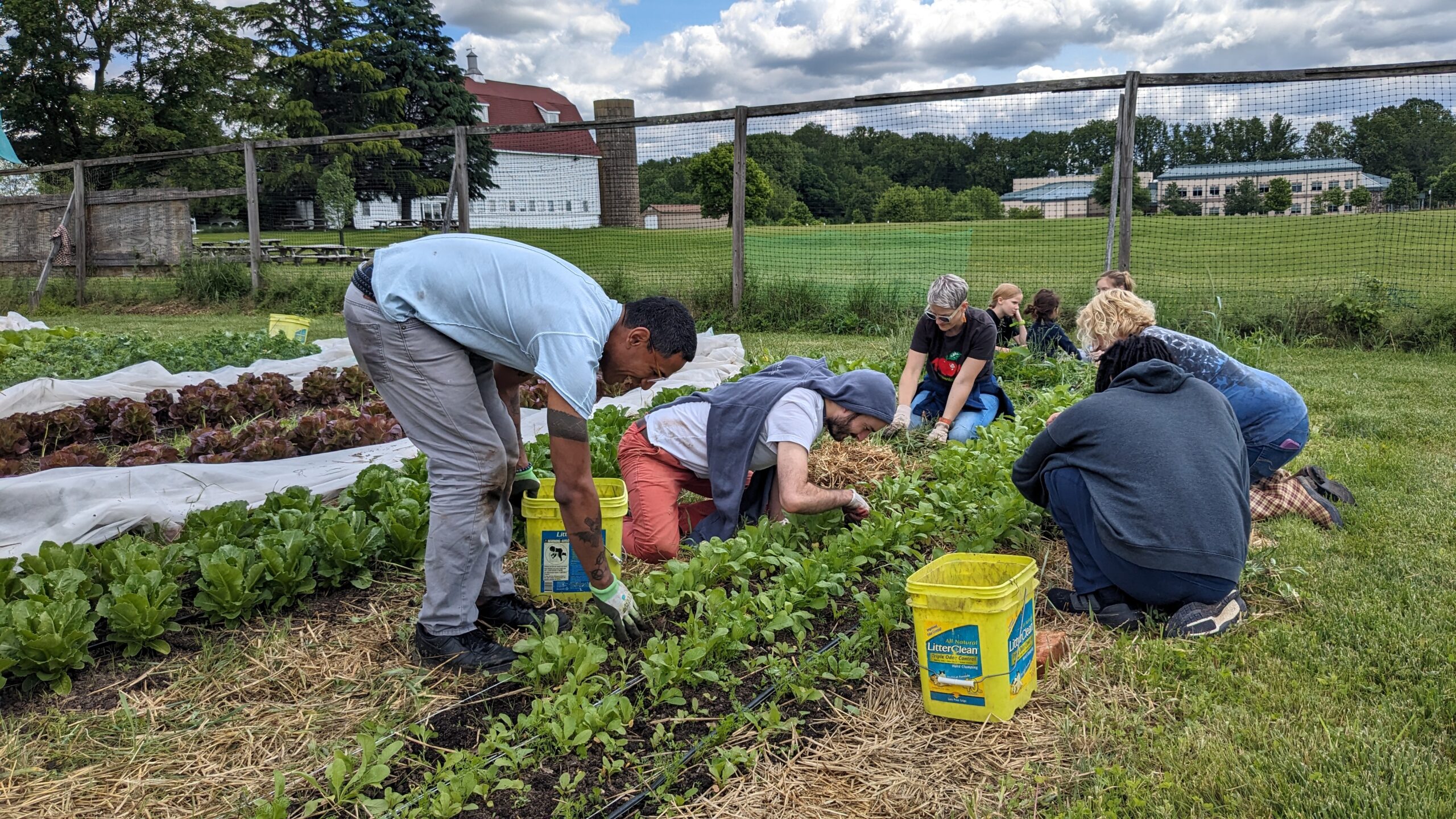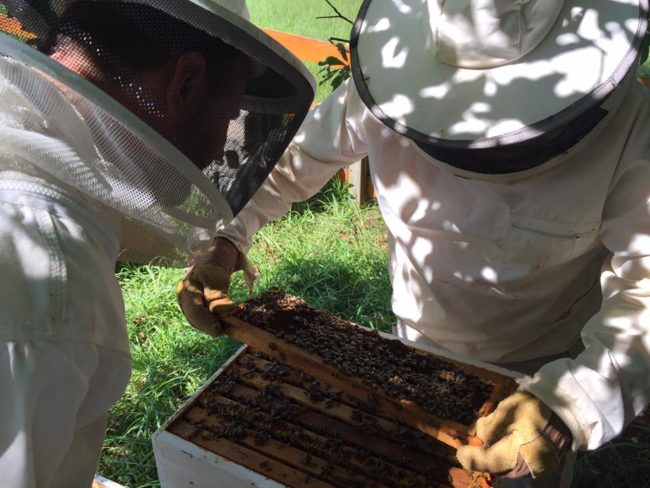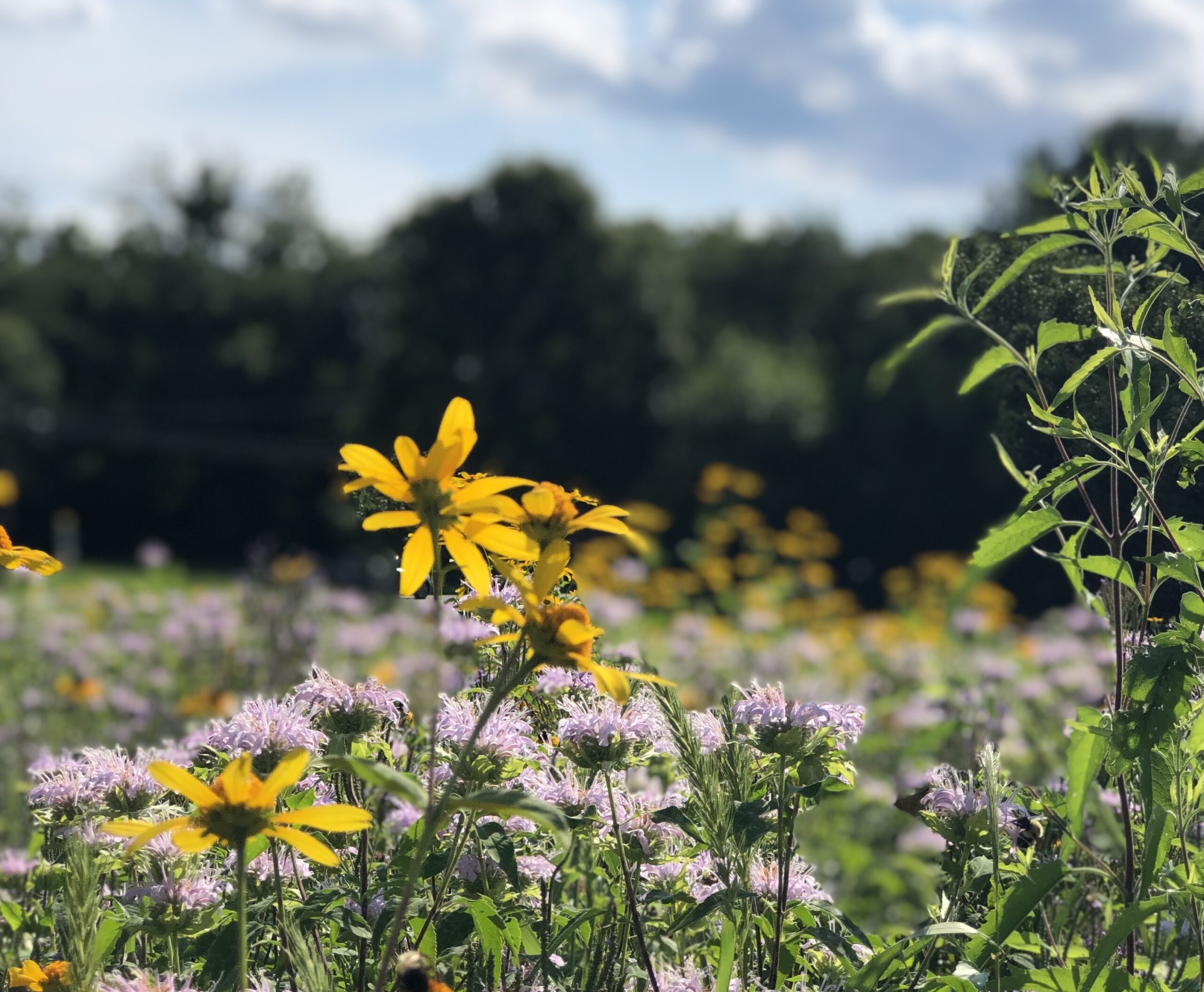Our Property
Nestled between the metro areas surrounding D.C. and Baltimore, our sixty-three acre parcel property at 2410 Spencerville Road in Montgomery County, Maryland was purchased by Cedar Ridge Community Church in 1996. We constructed a church building and opened our doors in 1998. Since then, the clay dirt surrounding the church and the invasive plant-filled fields have slowly developed into a beautiful property full of flowers, wildlife and opportunity. We value our property, the creation throughout it, and the environment that sustains it. It is intentional that we have a native pollinator garden, bird boxes along our fences, ‘no-mow’ meadows, and a community solar farm. We have a prayer walk that runs throughout our land that offers tranquility and peace in an otherwise busy metropolitan corridor. Much life can be found among the vegetation: we’ve spotted fox, rabbits, deer and groundhogs, and an endless variety of birds. We host honey bees and enjoy a variety of bugs and butterflies. There are even four geocaches on our property. If you enjoy the outdoors, you are invited to enjoy this land with us!
Explore the Property
Land Acknowledgement
Although there appears to be no evidence of indigenous settlements in this immediate area, the Piscataway People settled in various parts of what are now Montgomery, Prince George’s, Baltimore and Anne Arundel counties. Their ancestors arrived in Maryland more than 10,000 years ago, and no doubt people passed through this area for many generations prior to the arrival of European settlers in the 17th century. Beginning in 1666, these settlers signed a series of treaties to acquire lands from the Piscataway. All of these treaties were broken, forcing the Piscataway off their ancestral lands. We encourage our community members to learn more about the Piscataway People, their culture, and history.
A search of historical records suggest it is unlikely enslaved people worked on this land. But on farms and plantations throughout Maryland, enslaved Africans and their descendants were forced to labor for White settlers. Here in Montgomery County, of the approximately 18,000 residents in 1860, over 5,400 were enslaved. Read more about our county’s history of racism here, and check out the nearby Underground Railroad Experience Trail.
Property Workdays
Cedar Ridge Workdays are Saturdays that we invite all of you to join us on the property to work on property projects. We meet every other Saturday (from March to November) and work together between 8 a.m. and noon. This is a fun way to meet some new faces, share your talents of tools or landscaping…and really get the church in good shape. Check the announcements for details.
One Sunday morning in April, 1982, Brian McLaren, along with 10 friends, mostly in their twenties, gathered in a living room in a little house not far from the University of Maryland. The group consisted of men and women from nearly eleven Christian backgrounds—Catholic, Protestant, non-charismatic, charismatic, denominational, nondenominational. They shared a common desire—to become an exciting, effective church that would welcome and embrace spiritual seekers of all kinds—Christians from many traditions and also those who had no-prior experience or knowledge of Christianity.
Several weeks earlier, McLaren, a college English instructor, had called an old friend, Bill Duncan, to see if Bill had an interest in helping launch this new venture, and they, along with their spouses, Grace and Shobha, decided to call the new church “Community Church.” Soon there were twenty people, then thirty. Some families from those early days are still actively involved in the church today. Eventually Brian was asked to lead the church as its full-time pastor.
The church grew over the next 15 years, moving from place to place to accommodate its increasing size, until in 1996, after an outpouring of sacrificial giving, Cedar Ridge became owners of a beautiful 63-acre historic property in Burtonsville, Maryland.
At about the same time, Brian McLaren began writing books, and soon became an increasingly significant participant in networks of emerging leaders and churches around the world. Seeking to utilize his unique gifts as an influential thinker, writer and speaker, McLaren left pastoral ministry to respond to his call to the public arena full-time. After a prayerful and extensive search for a new Senior Pastor, the Cedar Ridge community appointed Matthew Dyer as Senior Pastor, to whom McLaren passed the baton of leadership in January 2006. Matthew had been a pastor in the Vineyard denomination of churches since 1995 in both the US and UK (his native country).
At the time of this transition of pastoral leadership, Cedar Ridge had grown to include several hundred people and was supporting many activities, ministries and programs that were difficult to sustain in terms of resources and staff, and there was an increasing recognition that a central, unifying focus was needed. Seeking greater clarity and purpose for the future, yet desiring at the same time to maintain its underlying values and beliefs, the people of Cedar Ridge engaged together in an intense year of “re-envisioning the church.” This time was both difficult and rewarding. It meant profound change as old systems and programs were released to make way for something new, and also provided opportunity for personal transformation as participants engaged in discernment, fasting, sacrifice and prayer.
Through this extensive process that included church-wide discussion and collaboration, a clear, comprehensive vision was formed and in September 2007 our church community embarked on its quest to serve God, one another and the world in a unique and focused way. Interestingly the vision process led us back to our roots and the earliest dreams for our community: to become a people simply devoted to following Jesus and loving people in his name.

